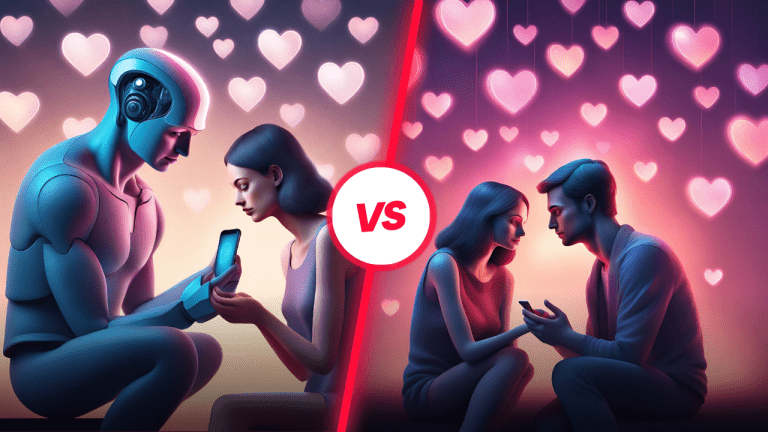In the age of the smartphone, capturing and sharing moments have become a daily routine for billions of people worldwide. As smartphones continually evolve, so do their photographic capabilities. Google’s latest Pixel 8 and Pixel 8 Pro smartphones have introduced a new era of photography by incorporating powerful artificial intelligence (AI) tools designed to enhance photos in real-time. These tools raise profound ethical questions about the line between reality and enhancement, impacting not only how we perceive photography but also how we interact with the digital world. In this article, we will explore the pros and cons of Google’s AI-powered photo tools, along with their real-time impact on our digital lives.
The Pros:
- Enhanced Photography: Google’s AI-powered photo tools offer users the ability to elevate their photography game like never before. These tools allow users to make real-time edits on their photos, from adjusting colors to tweaking light levels. This enhancement can result in more visually appealing and memorable photographs. The use of AI can significantly improve the quality of smartphone photography, offering users a quick and accessible way to take better pictures.
- Quality and Creativity: The AI features offered by Google’s Pixel 8 series are seen as a unique selling point. Users now have the opportunity to capture the ideal shot, with everyone looking their best. It provides a level of creative freedom that was previously limited on smartphone cameras. Users can alter expressions, remove unwanted elements, and more, all in real-time. This empowers individuals to produce photos that meet their artistic or personal standards.
- Accessibility: These AI tools democratize photography. They make it accessible and easy for anyone, whether they are amateur photographers or casual smartphone users, to create better pictures. The technology takes the complexity out of photo editing, allowing virtually anyone to improve their photos with a few taps on their smartphone screen. This accessibility broadens the appeal of smartphone photography.
- Competitive Edge: The AI-driven enhancements provided by Google’s Pixel 8 series give the company a competitive edge in the smartphone market. In a market dominated by giants like Samsung and Apple, the ability to offer unique and advanced features can set a company apart. These AI capabilities are a key factor in Google’s efforts to compete with its rivals.
The Cons:
- Ethical Concerns: One of the most significant concerns raised by tech commentators, photographers, and the public is the ethical aspect of AI manipulation. Altering reality, even for aesthetic reasons, can be a slippery slope. The risk lies in the potential to undermine trust in online content and distort our perception of reality. In an era where misinformation and deepfakes are already significant concerns, AI-powered photo manipulation adds another layer of uncertainty to the authenticity of visual content.
- The Fake World: The introduction of AI-powered photo manipulation tools raises the specter of a world where reality becomes a matter of interpretation. With the ability to instantly remove or add elements to photos, users may begin to question the authenticity of the images they encounter daily. This is particularly concerning in professional contexts, such as journalism and advertising, where credibility is of utmost importance. It’s not just a potential threat to trust but also a risk to the very essence of what we consider real.
- Metadata and Disclosure: While Google has taken steps to address ethical concerns by adding metadata to indicate when AI is used in photos, the effectiveness of this mechanism remains debatable. Users may not always notice or fully understand this information, raising questions about transparency in photography. If users are unaware of the extent to which photos have been manipulated, they may unknowingly consume and share altered content, further complicating the issue of trust in digital imagery.
The Real-Time Impact:
- Perception of Reality: The real-time impact of Google’s AI-powered photo tools extends beyond just the photos themselves. It influences how we perceive the reality around us. When we constantly encounter photos that have been enhanced, altered, or manipulated, we begin to question the authenticity of the visual information we consume. This shift in perception can affect various aspects of our lives, including the news we trust, the products we buy, and the people we follow on social media.
- Trust in Online Content: The real-time use of AI in photo editing raises significant questions about the trustworthiness of online content. In a world where fake news, deepfakes, and misinformation are already rampant, AI-enhanced photos add another layer of complexity. As AI tools become more powerful and accessible, the potential for malicious use, misinformation, and digital manipulation increases. This can have far-reaching consequences for our society and how we consume information.
- Digital Literacy: The advent of AI-powered photo tools necessitates an increased level of digital literacy. Users need to be aware of the capabilities of AI in photo editing and the potential for manipulation. They must also be able to discern between authentic and altered content. This real-time impact places the onus on individuals, educators, and technology companies to promote digital literacy and responsible use of technology.
- Transparency and Disclosure: In light of the ethical concerns surrounding AI photo manipulation, there is a growing need for greater transparency and disclosure. Technology companies should be more explicit about when and how AI is used in photo editing. This ensures that users are informed and can make conscious decisions about the content they consume and share.
Real-Time Case Study: The Ethical Dilemma of AI Photo Manipulation in Dating Apps
In a world where dating apps have become the norm for young adults seeking love and companionship, the integration of AI-powered photo manipulation tools poses an ethical dilemma. This case study explores how the advancement of AI technology can manipulate and affect young minds when dating apps use these tools, potentially leading to tragic consequences in their lives.
The Scenario:
Consider a popular dating app, “LoveLink,” which introduces AI-enhanced photo profiles. Users can upload photos and apply real-time enhancements to make themselves appear more attractive or desirable. This new feature uses AI to adjust facial features, remove blemishes, and even alter expressions to create an idealized version of the user.
The Pros and Cons:
Pros:
- Enhanced Profiles: Users can present themselves in the best possible light, potentially increasing their chances of getting matches and dates.
- Boosted Confidence: Young adults often struggle with self-esteem and body image issues. AI-enhanced photos may help boost users’ self-confidence.
Cons:
- Deceptive Profiles: The primary concern is the potential for users to create deceptive profiles that do not accurately represent their true appearance.
- Misguided Expectations: AI-enhanced photos can set unrealistic expectations, leading to disappointment or disillusionment when users meet in real life.

The Case Study:
Part 1: Sarah’s Experience
Sarah, a 25-year-old college student, decides to give LoveLink a try. She is an introvert with self-esteem issues and hopes to find someone special. She uploads a photo of herself and applies AI enhancements to make her appear more conventionally attractive.
Real-Time Impact:
- Sarah matches with several individuals, and conversations flow effortlessly.
- After a week of chatting, she decides to meet her top match, David, in person.
The Consequence:
- David is visibly disappointed upon meeting Sarah. He expected the enhanced version of her, and the real Sarah doesn’t meet those expectations.
- Sarah, already struggling with self-esteem issues, feels rejected and hurt, leading to a further decline in her self-confidence.
Part 2: Mark’s Experiment
Mark, a 22-year-old social media enthusiast, decides to take the AI enhancements to the extreme. He transforms his appearance into someone entirely different from his real self.
Real-Time Impact:
- Mark’s transformed profile garners significant attention. He receives numerous matches and messages from interested individuals.
The Consequence:
- Mark arranges a date with Emily, a young woman who believes she’s interacting with the person in the transformed profile.
- When they meet, Emily realizes Mark looks nothing like his AI-enhanced photos, and she feels deceived and upset.
Part 3: Jenny’s Tragic Encounter
Jenny, a 21-year-old college student, uses AI enhancements sparingly but becomes suspicious of others doing the same. She feels that everyone on the app looks too good to be true.
Real-Time Impact:
- Jenny becomes overly cautious when using the app and finds it hard to trust anyone’s appearance.
The Consequence:
- Jenny becomes increasingly anxious and paranoid about dating app encounters.
- Her anxiety affects her mental health and relationships, leading to strained personal connections and academic performance.
The Lessons Learned:

This case study highlights the real-time impact of AI photo manipulation on young minds using dating apps. While AI enhancements can initially boost confidence and lead to more matches, they also create a deceptive environment with potential for tragic consequences.
- Misguided Expectations: AI-enhanced photos can set unrealistic expectations, leading to disappointment and distrust when users meet in person. This can shatter self-esteem and hinder genuine connections.
- Deceptive Practices: Users who engage in excessive AI manipulation can deceive others, which not only erodes trust but also leads to distress and negative experiences.
- Mental Health Impact: For individuals like Jenny, the constant suspicion and anxiety can have a significant impact on their mental health, affecting their overall well-being and relationships.
Conclusion:
The introduction of AI-powered photo tools in Google’s Pixel 8 series has triggered a profound shift in how we approach and perceive photography. While these tools offer exciting possibilities for enhanced photography and creative expression, they also raise significant ethical questions about the line between reality and enhancement. The real-time impact of these tools extends beyond individual photos; it affects our perception of reality, trust in online content, and the need for increased digital literacy and transparency.
In this evolving landscape of digital imagery, it is imperative for users, tech companies, and society at large to engage in a dialogue about what constitutes reality and how we can maintain trust in the digital age. As AI technology continues to advance, it is crucial that we navigate this brave new world of photography with thoughtfulness, transparency, and ethical considerations at the forefront of our discussions. The line between reality and enhancement may blur, but our commitment to ethical, responsible, and informed use of technology should remain crystal clear.

